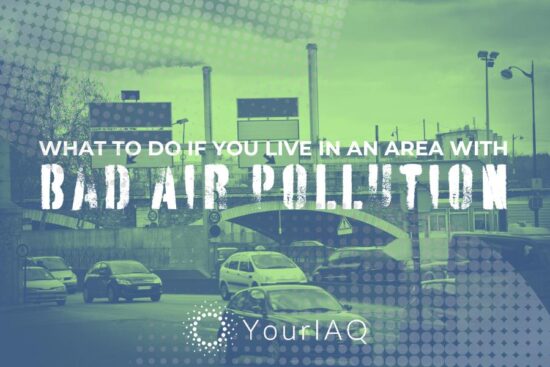
As we age, ensuring a healthy living environment becomes paramount, and one often overlooked aspect is the quality of the air we breathe indoors. In this beginner’s guide, we’ll delve into the connection between indoor air quality (IAQ) and cognitive health in seniors. Research has uncovered compelling findings, shedding light on the impact of air pollution on cognitive function, particularly in vulnerable populations like the elderly. We’ll explore how we can safeguard the mental well-being of seniors by fostering a healthy indoor environment.
The Silent Threat: Air Pollution and Vulnerable Populations
Air pollution is not just an outdoor concern; it seeps into our homes, posing a silent threat, especially to vulnerable populations. Seniors, spending over 90% of their time indoors, are particularly susceptible to the adverse effects of indoor air pollution. Studies have shown a direct correlation between exposure to air pollutants and cognitive decline in the elderly.
Connecting the Dots: IAQ and Cognitive Decline
Recent research has increasingly pointed to the connection between poor IAQ and cognitive health deterioration in seniors. Fine particulate matter, volatile organic compounds (VOCs), and other indoor pollutants can infiltrate living spaces, affecting the brain and cognitive functions. Understanding this link is crucial for taking proactive measures to protect the cognitive well-being of our seniors.
Research Findings: A Closer Look
A growing body of research, especially related to mental health, reveals alarming associations between exposure to indoor air pollutants and an increased risk of cognitive impairment. Fine particles, often originating from cooking activities and outdoor pollution, have been linked to a decline in cognitive abilities, making it imperative to address the sources of these pollutants.
Protecting Cognitive Health: 5 Practical Measures for Seniors
- Indoor Air Quality Monitoring: A Key to Cognitive Well-being
- Regularly monitor indoor air quality using reliable IAQ devices to identify and mitigate potential risks. This proactive approach empowers seniors and their families to take immediate action when air quality is compromised.
- Effective Ventilation Strategies: Breathing Fresh Life into Homes
- Ensure proper ventilation by opening windows, using exhaust fans, and considering air purifiers. This promotes the circulation of fresh, clean air and reduces the concentration of indoor pollutants.
- Choosing the Right Air Purifiers: Tailored for Seniors
- Select air purifiers equipped with HEPA filters and activated carbon, specifically designed to capture fine particles and eliminate VOCs. This ensures a targeted approach to improving indoor air quality.
- Maintaining Humidity Levels: A Balancing Act
- Going Beyond the Basics: Cognitive Health and Environmental Design
- Consider incorporating environmental design principles into living spaces, optimizing layouts for seniors. This includes minimizing clutter, ensuring proper lighting, and using contrasting colors to aid those with cognitive challenges.
Case Study: Enhancing Indoor Air Quality and Cognitive Well-being for Mrs. Smith, a 78-Year-Old Living Alone
Patient:
Mrs. Smith, a 78-year-old woman residing independently in a single-family home.
Presenting Complaints:
Mrs. Smith has been grappling with persistent respiratory issues, including coughing, wheezing, and shortness of breath for several months. Additionally, she has exhibited signs of cognitive decline, such as memory lapses and difficulty concentrating. Concerned about her overall well-being, Mrs. Smith recently sought a medical checkup.
Medical History:
Mrs. Smith has a history of asthma and chronic obstructive pulmonary disease (COPD). She is actively managing both conditions with prescribed medications.
Home Environment:
Mrs. Smith lives in a single-family home constructed in the 1950s, which poses challenges to her health. The home has poor ventilation, limited natural light, and potential sources of indoor air pollution:
- Mold Growth: Visible mold in the bathroom and basement.
- Dust and Allergens: Limited air filtration leading to dust accumulation and increased allergens.
- Chemical Irritants: Use of cleaning products and air fresheners containing volatile organic compounds (VOCs).
- Combustion Appliances: The home utilizes a gas stove and kerosene heater, contributing to indoor air pollution.
Investigation:
- Indoor Air Quality (IAQ) Assessment: Identified elevated levels of mold spores, dust mites, and VOCs in the home.
- Medical Evaluation: Considering both respiratory symptoms and cognitive decline, Mrs. Smith’s doctor attributed her health issues to the subpar indoor air quality.
Intervention:
- Mold Remediation: Professional service addressed visible mold and underlying moisture issues.
- Air Filtration: Installation of HEPA air purifiers aimed to eliminate dust, allergens, and other airborne pollutants.
- Ventilation Improvement: Inspection and repair of the home’s ventilation system to enhance air circulation.
- Source Reduction: Transition to natural cleaning products and air fresheners to reduce VOC exposure.
- Education: Mrs. Smith received education on indoor air quality and practical steps to enhance her home’s air quality.
Outcome:
Following the interventions, Mrs. Smith experienced a substantial improvement in respiratory symptoms, reporting reduced coughing, wheezing, and shortness of breath. Notably, her cognitive function showed improvement, with fewer memory lapses and enhanced concentration.
Subsequent IAQ assessments showcased a significant decrease in pollutant levels. Mrs. Smith’s overall quality of life saw remarkable improvement, enabling her to live independently and comfortably in her home.
Resources:
- EPA – Air Quality
- National Institute of Environmental Health Sciences (NIEHS)
- The American Journal of Medicine
This case study underscores the critical role of indoor air quality not only in respiratory health but also in cognitive well-being, showcasing how addressing indoor air quality issues can lead to a holistic improvement in the health of older adults. For further insights on maintaining a healthy living environment, refer to reputable resources such as the EPA, NIEHS, and medical journals like The American Journal of Medicine.
FAQs: Clearing the Air on Cognitive Health for Seniors
Can poor indoor air quality really affect cognitive health in seniors?
Yes, studies show a direct link between exposure to indoor air pollutants and cognitive decline in the elderly.
How can I monitor indoor air quality at home?
Invest in indoor air quality monitors to regularly assess pollutant levels and take timely corrective actions.
Are there specific air purifiers for seniors?
Yes, choose purifiers with HEPA filters and activated carbon for targeted removal of pollutants affecting cognitive health.
Why is humidity control important for seniors’ cognitive well-being?
Maintaining optimal humidity levels prevents the growth of mold and mildew, contributors to poor air quality affecting cognitive health.
Conclusion: Nurturing Cognitive Well-being Through Indoor Air Quality
Safeguarding the cognitive health of seniors involves understanding and addressing the nuances of indoor air quality. By implementing practical measures, such as regular monitoring, effective ventilation, and targeted purification, we can create a living environment that promotes cognitive well-being. Remember, the air we breathe indoors plays a pivotal role in shaping the quality of life for our beloved seniors.






